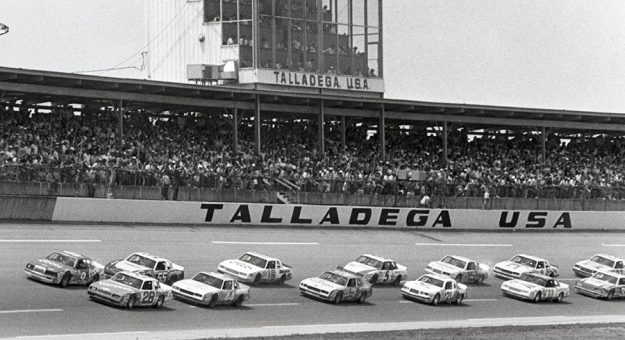The Gen 7 race car set to debut in the Feb. 6 Busch Clash at the L.A. Memorial Coliseum is one of NASCAR’s biggest changes during the sanctioning body’s 74-year history.
The new cars have sleek bodies, wider wheels with a single lug nut and low-profile tires, and the car numbers have been repositioned to the front of the door panels for the first time since the early 1950s.
They are arguably the most radical alterations since the cars were first raced as “Strictly Stocks” with chrome bumpers, bench seats, headlights and horns.
Superspeedways
The addition of superspeedway racing was NASCAR’s first big change.
NASCAR ran its first superspeedway race on Sept. 4, 1950, at Darlington (S.C.) Raceway, which was built by local entrepreneur Harold Brasington. Johnny Mantz won the Labor Day afternoon race that started 70 cars.
The popularity of that race prompted investors to build Raleigh (N.C.) Speedway in 1952, Daytona Int’l Speedway in 1959, Charlotte Motor Speedway and Atlanta Motor Speedway in 1960, North Carolina Motor Speedway in 1965 and Talladega (Ala.) Superspeedway and Michigan Int’l Speedway in 1969.
When it opened, Daytona’s mammoth 2.5-mile layout was the largest track the adventurous stock car drivers had ever seen. The huge turns were three times taller than the homes they lived in. To drive on such a structure required sheer speed to stay on its banks and incredible courage to race on them.
“It scared the hell out of me and everybody that came down through that tunnel (under the fourth turn),” said three-time NASCAR champion Lee Petty in the documentary “Petty Blue” produced in 2011. “We had been running half-miles, quarter-miles and maybe a mile now and then. We look up there and see this monster, you know what I mean? And God, people’s eyes popped out of their heads.
“Then I said to myself, ‘Those guys don’t have any more experience in this dang race car (on that track) than I have. So I said, ‘I’ll get in there and run wide open,’ and that’s what I did.”
Petty was declared the winner of the inaugural Daytona 500 on Feb. 25, 1959, three days after taking the checkered flag in a photo finish over Johnny Beauchamp.
Making a living from racing wasn’t for the faint of heart.
Manufacturers
From the very beginning, NASCAR founder Bill France had a love-hate relationship with executives from Chrysler, Ford and General Motors regarding rules for engine displacement.
“If you had a ride with a team that had factory support and there was a dispute with NASCAR over a rule change, you could get a phone call and you might be out of a ride,” said 1983 Cup Series champion Bobby Allison. “So at times I may end up running my own car. There were times in my career when I would finish in the top 10 but didn’t make a lot of money, especially on short tracks. There were times when I could make more money driving my own late model cars than I was on the Cup cars.
“Goodyear would give us a set of tires but we would still have tire bills to pay to run 500-mile races, again in my own car,” Allison added. “Then there were engines to build and cars to rebuild if they got wrecked. There were travel bills. A lot of the teams used volunteer pit crews to make it all work. It was a different era of racing, but it was still incredibly expensive.”
Click below to continue reading.
